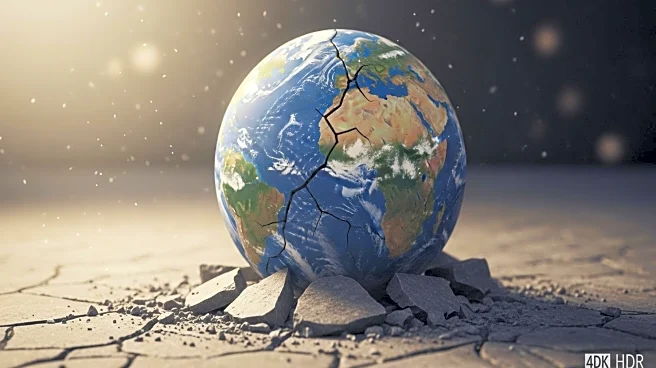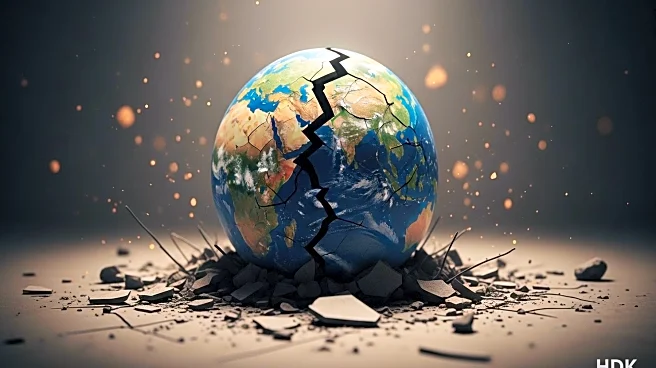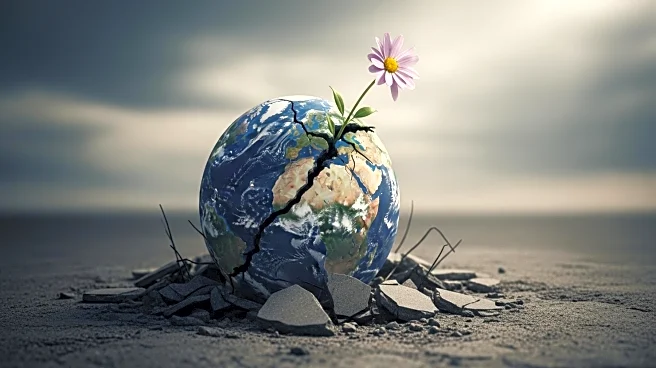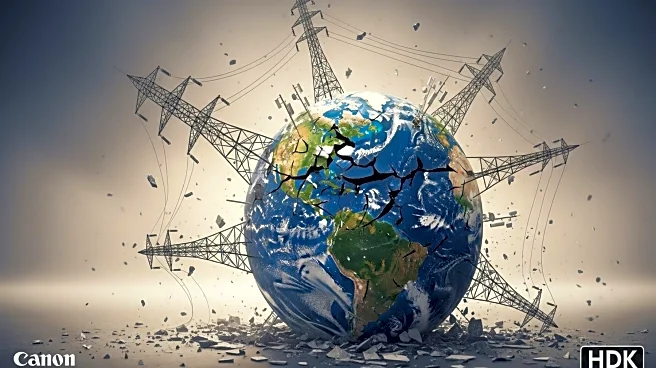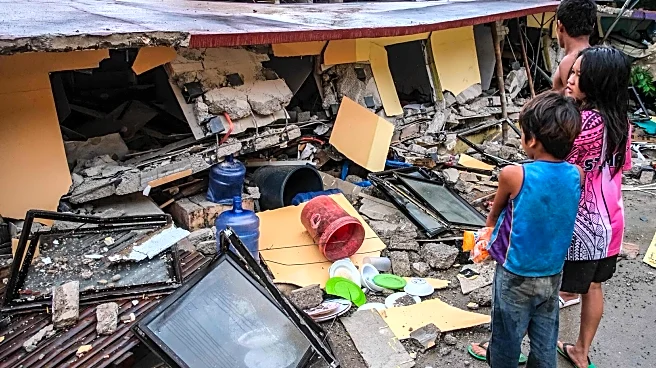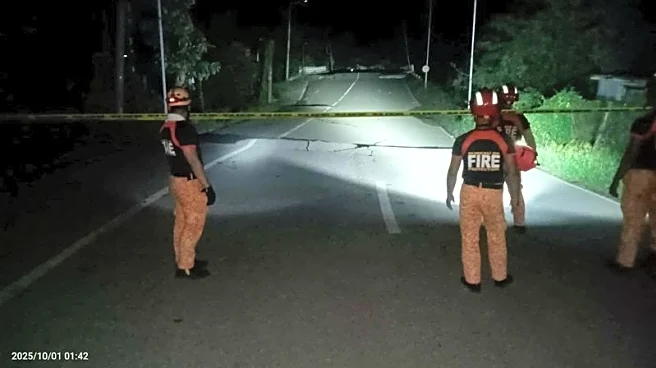What's Happening?
In the aftermath of a 6.9-magnitude earthquake in the central Philippines, rescuers are working tirelessly to find survivors. The earthquake, which struck near Bogo city in Cebu province, has resulted in at least 72 deaths and over 200 injuries. The disaster has caused significant structural damage, with many residents trapped under debris. Rescue operations are being hampered by sporadic rain and damaged infrastructure. The Philippine government is considering seeking international aid as they conduct a rapid damage assessment. The earthquake follows a recent tropical storm, compounding the challenges faced by the affected communities.
Why It's Important?
This earthquake highlights the Philippines' susceptibility to natural disasters, exacerbated by its geographical location. The event has significant implications for emergency management and international aid coordination. The compounded impact of the earthquake and recent storm underscores the need for robust disaster preparedness and response systems. The situation may influence future policy decisions regarding infrastructure resilience and emergency response capabilities. The economic and social repercussions of the disaster are likely to be profound, affecting local communities and potentially prompting international humanitarian support.
What's Next?
The Philippine government is assessing the need for international assistance, which could lead to increased foreign aid and support. The ongoing rescue efforts are critical, with the potential for the death toll to rise as more areas are accessed. The disaster may prompt a review of building standards and emergency protocols to better prepare for future events. The international community may respond with aid and support, influencing diplomatic relations and humanitarian efforts in the region.



